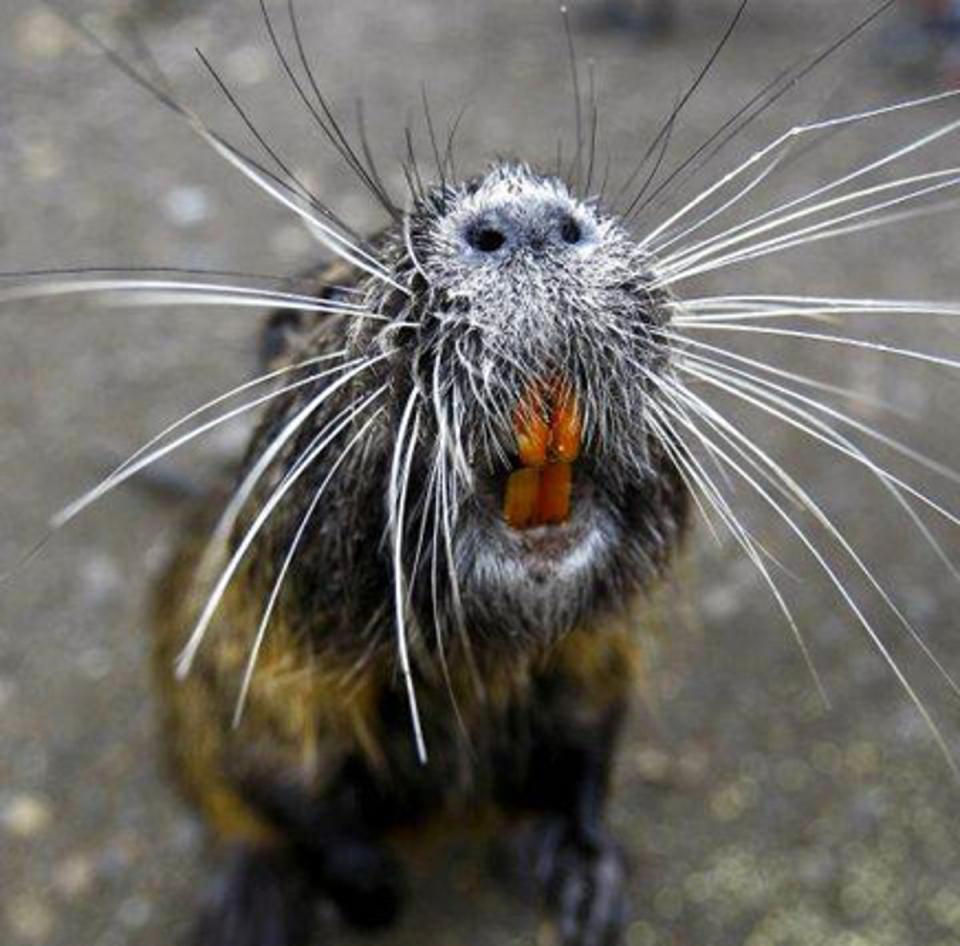Swamp rats with bright orange teeth are terrorising parts of the US
In March, Louisiana officials announced a deal to free an unlikely folk hero and fugitive: Neuty the swamp rat. His fellow species members may not be so lucky.
In 2020, New Orleans couple Myra and Denny Lacoste found the pint-sized specimen on the side of the road, after his mother and siblings had been killed by a vehicle, so the family decided to take in the cuddly nutria, a species of semiaquatic mammal native to South America known for its bright-orange teeth.
Neuty swam in the Lacoste family pool, rode around town in their truck, even greeted customers at the Lacoste’s seafood store, until the mammal, which grew to be 22 pounds, attracted the attention of the media, then local officials.
@neutythenutria #nutrias #nolapets #neutythenutria #rodentsoftikok #trending #rodent #bayou957 #tiktoker #tiktokviral #freeneuty #letitgo #myfavoriteplace
♬ Let It Go (From "Frozen") - Movie Sounds Unlimited
The state Department of Wildlife and Fisheries initially planned to confiscate the critter and relocate Neuty to the Baton Rouge Zoo, though the DWF eventually settled last month for a deal where the Lacoste family would give the nutria regular veterinary checkups and keep him caged while at the seafood shop.
“We’re beyond ecstatic,” Myra Lacoste told The New Orleans Advocate. “We’re anxious to hold him and smooch on him.”
Neuty may have come out unscathed, but things look a little different for his swampy brethren: nutria, which can consume up to a quarter of their body weight in plant material a day, are the subject of a sweeping nationwide culling effort to stop the swamp rats from eroding wetlands and damaging farm crops.
The state of Maryland spent more than two decades and $30m to eliminate the nutria, using a technique dubbed “rolling thunder” to systematically move across half a million acres of marsh land and kill roughly 14,000 of the mammals, sometimes using radio-tagged nutria to lead game officials to burrows.
The invasive species was declared gone from Maryland in 2022.

“We went a year or two before any of us really thought that those were the last ones,” Trevor Michaels, a supervisory wildlife biologist at the U.S. Department of Agriculture, told The Wall Street Journal. “We really didn’t believe it.”
Other states have launched similar efforts with Illinois working with the US Department of Agriculture to eliminate nutria in the state, while Louisiana offers a $6-per-tail bounty on the nutria, a programme that’s paid out more than $30m for over 6 million kills.
In California, wildlife officials are using scent dogs to track nutria through state wetlands. Nutria have been confirmed across Merced, Stanislaus, Fresno, San Joaquin, Fresno, Mariposa, Sacramento, Madera, and Tuolumne Counties, according to state officials.
“Due to their feeding habits, up to 10 times the amount of plant material consumed is destroyed, causing extensive damage to the native plant community, soil structure, and nearby agricultural crop,” according to the California Department of Fish and Wildlife. “The loss of plant cover and soil organic matter results in severe erosion of soils, in some cases converting marsh to open water.”
The animals also burrow deeply into wetlands themselves to make homes, further eroding soils.
Neuty may go free, but the days of his far-flung cousins may be numbered.

